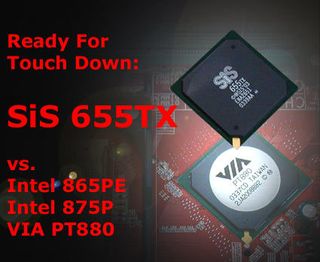The SiS, VIA and Intel Showdown at the Performance Chipset Corral
The Intel, SiS And VIA Chipset Shootout

Delays in Intel's processor production in 90-nm technology have set the schedule back somewhat. Instead of a completely retooled Pentium processor based on the long-awaited Prescott core, there's the old Pentium 4 with more speed - but not before the new year rolls around. And there is word that the 4 GHz mark won't be hit until the end of 2004.
2003 is winding up in similarly unspectacular fashion for AMD, since it won't be able to top its news of construction of an additional chip plant at the familiar Dresden location (Fab 36). The company says 2004 will see more modest speed increases. The real question, however, is how the 64 bit Athlon will develop pricewise.
Intel has some advantages on this score, because the chipset competition for Socket 478 is major-league: the price war starts with its own expensive 875P and ranges all the way to antiquated models with integrated graphics and slow memory interfaces. As a rule, production numbers that are significantly higher are also playing their part.
Following the Intel tradition, Intel's chipset range covers a broad customer base. The 875P and 865PE for performance users, the 865G with integrated graphics for office systems and the 848P as a slimmed-down version with no dual-channel memory interface.
That leaves only two options for its competitors: their products have to be cheaper or faster. VIA has the performance chipset PT880 in its portfolio. We tested the chipset back in October and found it to be duly interesting. Now the final silicon is available, and it's loaded with even more features.
In a parallel development, SiS reworked the 655FX; the resulting 655TX has already received advance praise from some manufacturers in the runup to Computex.
Our question is: can the two chipsets from Taiwan prevail to unseat Intel's 875P from the performance throne? Our extensive collection of benchmarks settles the question.
Stay on the Cutting Edge
Join the experts who read Tom's Hardware for the inside track on enthusiast PC tech news — and have for over 25 years. We'll send breaking news and in-depth reviews of CPUs, GPUs, AI, maker hardware and more straight to your inbox.
Current page: The Intel, SiS And VIA Chipset Shootout
Next Page Intel 865PE And 875PMost Popular

